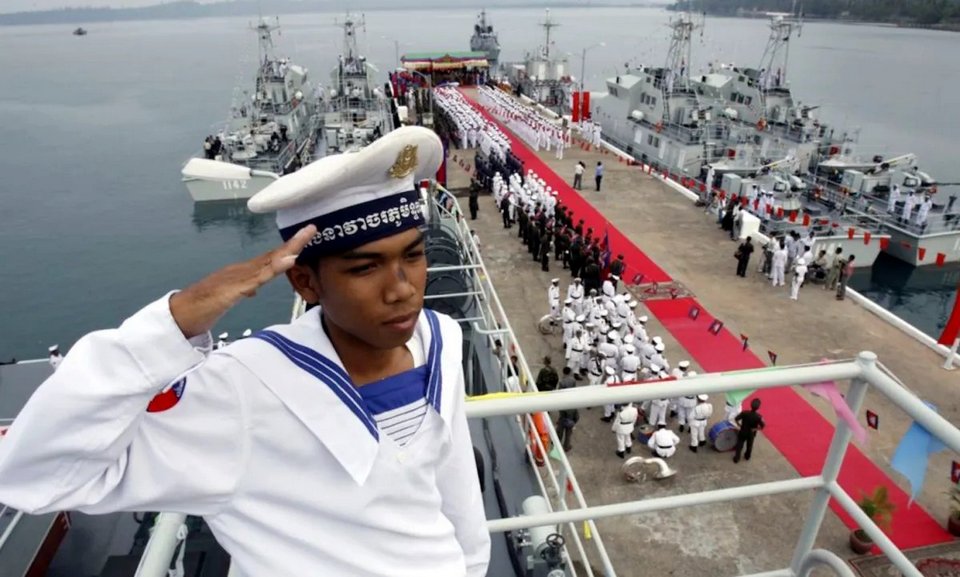
Cambodia’s neighbors, including Thailand, are concerned about the rapid rise of Chinese sea power and its possible use of the Ream naval base only a few hundred km south of the Thai naval port of Sattahip. The fear is that China is expanding its military footprint beyond the seizure of several disputed islands in the South China Sea which have already been fortified.
But neither Thailand nor Vietnam are saying much publicly to avoid disrupting vital trade relationships with China and, separately, because there’s nothing they can do anyway. Surveillance photos show that the Ream harbor has a new pier, a new dry dock, warehouses, living quarters and four basketball courts. Dredging is continuing though it’s unclear how deep it will go to admit the largest ships.
The official Cambodian position is that the dock is not yet finished. When it is, ships from other “friendly” nations (not just China) will be able to use the facilities. Cambodian deputy prime minister Sun Chanthol said the port was very small at 0.3 km and used only for training to prepare for the upcoming Golden Dragan exercises. Moreover, the Chinese presence in Ream is not permanent so does not count as a base. Mr Sun added that many US vessels are too big and might “get stuck”.

Others are not so sure. A foothold at Ream would give China better control over the South China Sea, 90 percent of which it claims to own in spite of an international court ruling against Beijing. The Seam port’s pier is almost identical to the 363 meter-long construction at the Chinese base in Djibouti in east Africa and long enough to accommodate a Chinese largest aircraft carrier.
But Greg Poling of the CSIS thinktank thinks that the small Ream base doesn’t get the Chinese navy any closer to regional hegemony. He points out that China currently has only two overseas bases whereas the US has hundreds, including a presence in both Thailand and the Philippines. However, Ream could be much more important as a signals and intelligence base for the Chinese military. Time alone will show the true significance of the developing construction on Cambodia’s southern tip.








